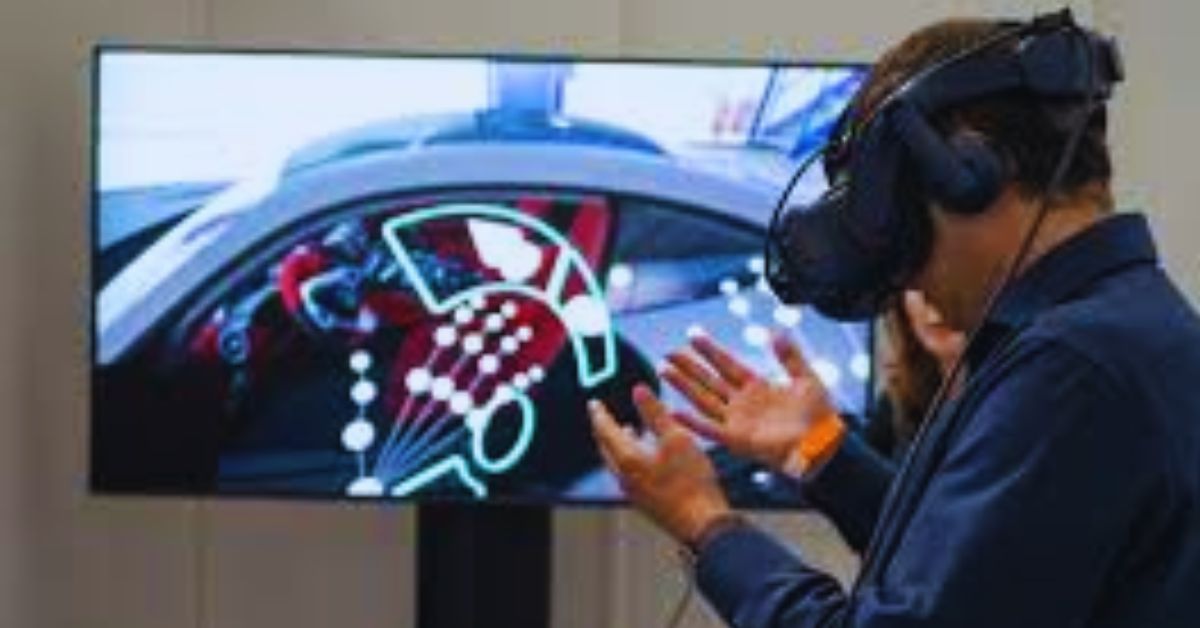
In recent years, Augmented Reality (AR) has emerged as a transformative technology that is significantly reshaping the way we interact with the world around us. By overlaying digital information onto the physical environment, AR is enhancing our experiences in both professional and recreational settings. This innovation is not only improving the way we work but also changing the way we play and engage with entertainment. In this article, we explore the many ways in which AR is revolutionizing these two aspects of our lives.
1. Augmented Reality in the Workplace
AR is transforming industries by enhancing productivity, collaboration, and training.
Training and Skill Development
One of the most notable applications of AR in the workplace is in the realm of training. Companies are now using AR to create immersive learning experiences for their employees. For instance, employees can interact with virtual objects and simulate real-world scenarios without the risks associated with traditional hands-on training. In fields such as healthcare, engineering, and manufacturing, AR allows trainees to practice complex procedures or operations, gaining valuable skills before working with actual equipment or patients.
Enhanced Collaboration
Another way AR is changing the workplace is by improving collaboration. AR technology allows teams to collaborate in real-time, regardless of their physical location. Using AR glasses or mobile devices, workers can share virtual models, data, and visualizations overlaid on their physical environment. This makes it easier to communicate ideas, solve problems, and brainstorm solutions more effectively, even in remote settings. For example, architects and designers can work together on virtual prototypes, adjusting designs and immediately seeing changes in a 3D space.
Increased Productivity
AR also boosts productivity by streamlining workflows. In sectors like logistics and warehousing, AR can guide employees through tasks with step-by-step instructions or highlight important information, improving accuracy and efficiency. AR-powered devices can display relevant data directly in a worker’s line of sight, reducing the need to switch between different tools or screens. This hands-free approach ensures that employees can focus more on the task at hand, rather than searching for information or navigating through complex interfaces.
2. Augmented Reality in Entertainment and Gaming
AR is creating new forms of entertainment, offering immersive experiences that blend the digital and physical worlds.
Gaming Revolution
The gaming industry has been one of the first to embrace augmented reality, with games like Pokémon GO leading the way. AR allows players to interact with virtual elements integrated into the real world, enhancing the sense of immersion and making games feel more lifelike. As AR technology advances, we can expect even more sophisticated games that seamlessly blend digital and physical environments, creating engaging experiences that challenge our senses and perception of reality.
Interactive Experiences
Beyond gaming, AR is also changing how we experience entertainment and media. Museums, theme parks, and live events are now using AR to create interactive, multimedia experiences. For example, at art exhibits, visitors can use AR apps to view additional layers of content—like videos, animations, or historical context—overlaying on the artwork, making it more engaging and educational. This immersive interaction enhances the way we consume information, making learning and entertainment more dynamic and personalized.
Sports and Live Events
Sports fans are also benefiting from AR, with innovations that bring them closer to the action. Augmented reality is being used to display live statistics, replays, and graphics during sporting events. Whether in the stadium or at home, fans can see real-time data overlaid on the game, making the experience more immersive. For example, AR technology can highlight player stats or provide 3D visualizations of plays, giving fans a deeper understanding of the game.
3. The Future of AR: Work and Play Combined
The boundary between work and leisure is becoming increasingly blurred, and AR is a key factor in this shift.
As AR continues to evolve, its potential to bridge the gap between work and play becomes clearer. Future applications might allow workers to access their office environments from anywhere in the world, collaborating with colleagues as if they were physically present in the same space. Simultaneously, AR will continue to enhance leisure activities, from virtual tourism to interactive fitness experiences.
In the near future, we might see fully immersive AR environments that combine both work and play, offering individuals a more flexible, dynamic lifestyle. For example, remote workers could take breaks by stepping into virtual worlds or participating in AR-enhanced social activities, blurring the lines between personal and professional life.
4. The Challenges of Augmented Reality Adoption
While the potential benefits of AR are vast, there are several challenges to overcome. One of the primary concerns is the cost of implementing AR technology, as both hardware and software solutions can be expensive. Additionally, the technology is still in its early stages, meaning there are occasional issues with hardware limitations, such as battery life and device comfort.
Another challenge is privacy and security. As AR involves collecting and processing vast amounts of data, companies must ensure that user privacy is protected and that sensitive information is not exposed to unauthorized parties. Furthermore, there is the potential for digital distractions that could reduce focus and productivity, particularly in the workplace.
Conclusion: The Impact of AR on Work and Play
In conclusion, augmented reality is undeniably changing the way we work and play. From revolutionizing workplace training and collaboration to transforming gaming and entertainment experiences, AR is enhancing our daily lives in ways we could only imagine a decade ago. As the technology continues to advance, we can expect even more exciting innovations that will reshape both professional and personal experiences. As we move forward, AR has the potential to create a more interactive, efficient, and enjoyable world for all. Whether at work or at play, the future of AR is bright, and its influence will continue to grow across all sectors of life.

Leave a Reply